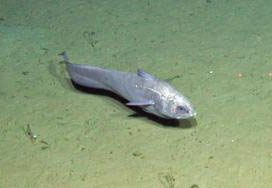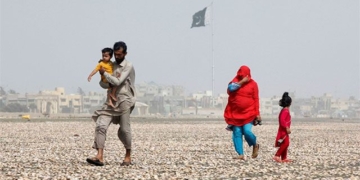The living environment is a crucial factor in the process of fish farming in ponds, tanks, and floating cages.  Proper management of the environment (water source, pond bottom treatment, algae…) will limit pathogens that affect fish growth.
Proper management of the environment (water source, pond bottom treatment, algae…) will limit pathogens that affect fish growth.
Moreover, when the weather transitions from the dry season to the rainy season, fish often experience “shock,” creating conditions for pathogens in the environment to attack, making fish more susceptible to disease. One of the common diseases that has emerged recently is blood infection in fish.
The family of Mr. Pham Chi Nguyen in My Quy Ward (Long Xuyen City – An Giang) invested nearly 50 million VND to build three cement tanks for farming snakehead fish.
In each tank, he stocked 5,000 juvenile fish and implemented a regular water supply process to keep the water clean, allowing the fish to grow quickly. Initially, Mr. Nguyen fed them with marine fish or ground snails, but shortly after, the water source became heavily polluted. After two months of farming, nearly half of the fish stock was lost. Observing the sick fish, he found that their bodies and mouths were hemorrhaging, with numerous ulcerations, torn or missing fins; internal organs were also bleeding or swollen, making it difficult to diagnose the disease.
|
| The antibiotic ENROFLOXACIN specializes in treating intestinal diseases, ulcer syndrome, and red spot disease. Mix it with fish feed (Image: biopharma) |
According to fisheries extension officers, if there is hemorrhaging on the body, fins, mouth, and internal organs, the fish are suffering from a harmful blood infection. This disease commonly affects catfish, basa fish, goby fish, carp, red tilapia, grass carp, and snakehead fish. Severely affected fish can die en masse, with juvenile fish potentially facing a 100% mortality rate.
According to Engineer Dang Hong Duc, Head of the Aquaculture Department at Bio Pharmachemie Joint Venture, proper management of the farming environment will help reduce harmful pathogens. Additionally, when farming fish, it is essential to renovate ponds, maintain cleanliness in floating cages, and choose healthy juvenile fish. Avoid feeding fish raw food; instead, it should be cooked to eliminate pathogens. Sick fish should be quickly removed and buried in a concentrated area treated with lime, rather than discarded in rivers or streams, which could spread disease to surrounding aquaculture models.
To prevent blood infection in fish, in addition to good environmental management, it is necessary to treat the pond bottom every 15 days with BIOZEOGEEN or BIO YUCCA. If fish show signs of “shock” during seasonal changes, immediately use BIO ANTISHOCK or BIO GLUCCAMIX to enhance their immune response. Upon detecting fish with blood infections, it is advisable to use strong and specific antibiotics such as ENROFLOXACIN or OXOCOL mixed with their feed for 5-7 consecutive days, then follow up with digestive enzymes like BIO ZYME or NUTRIFISH to encourage feeding and promote recovery.



















































